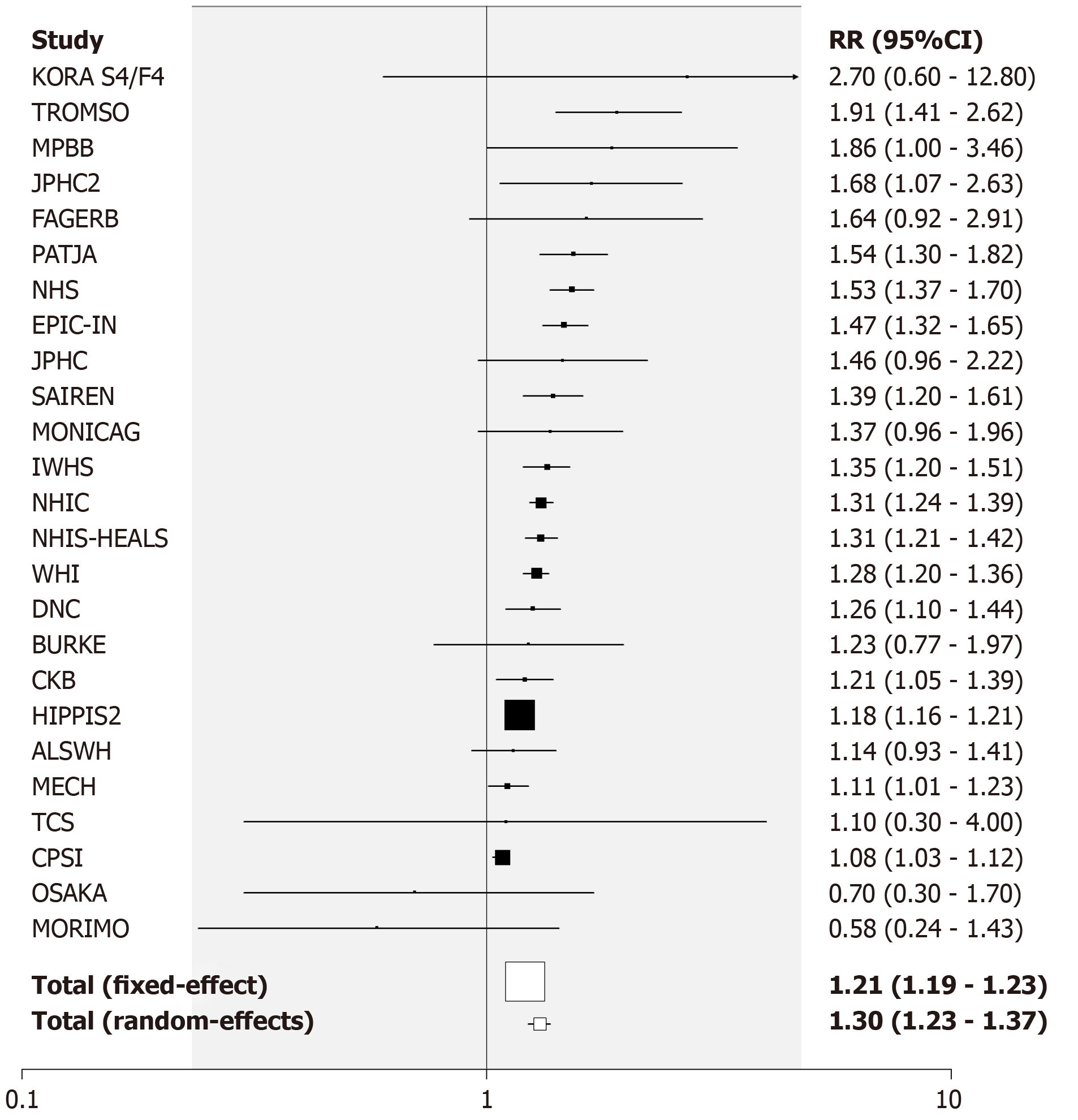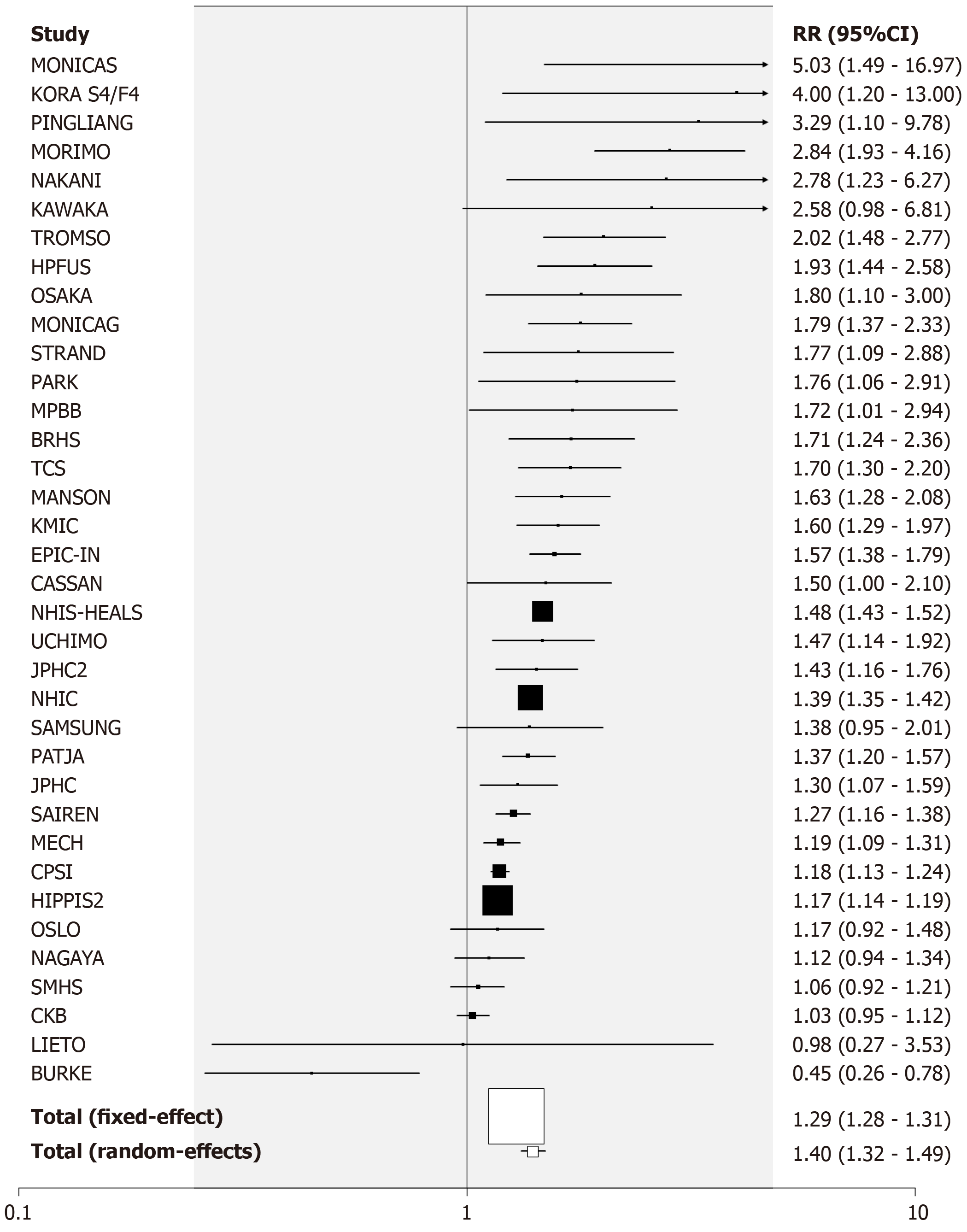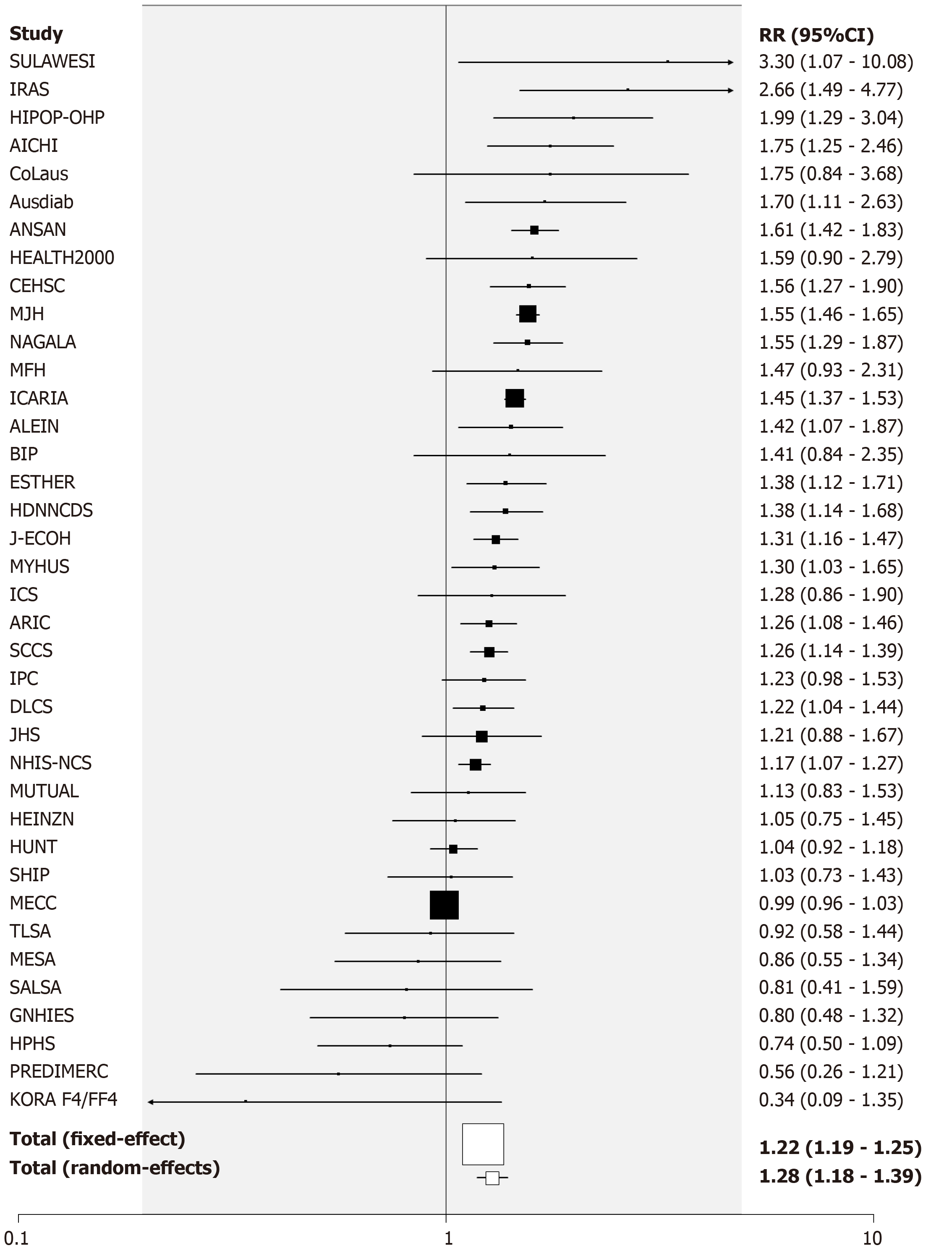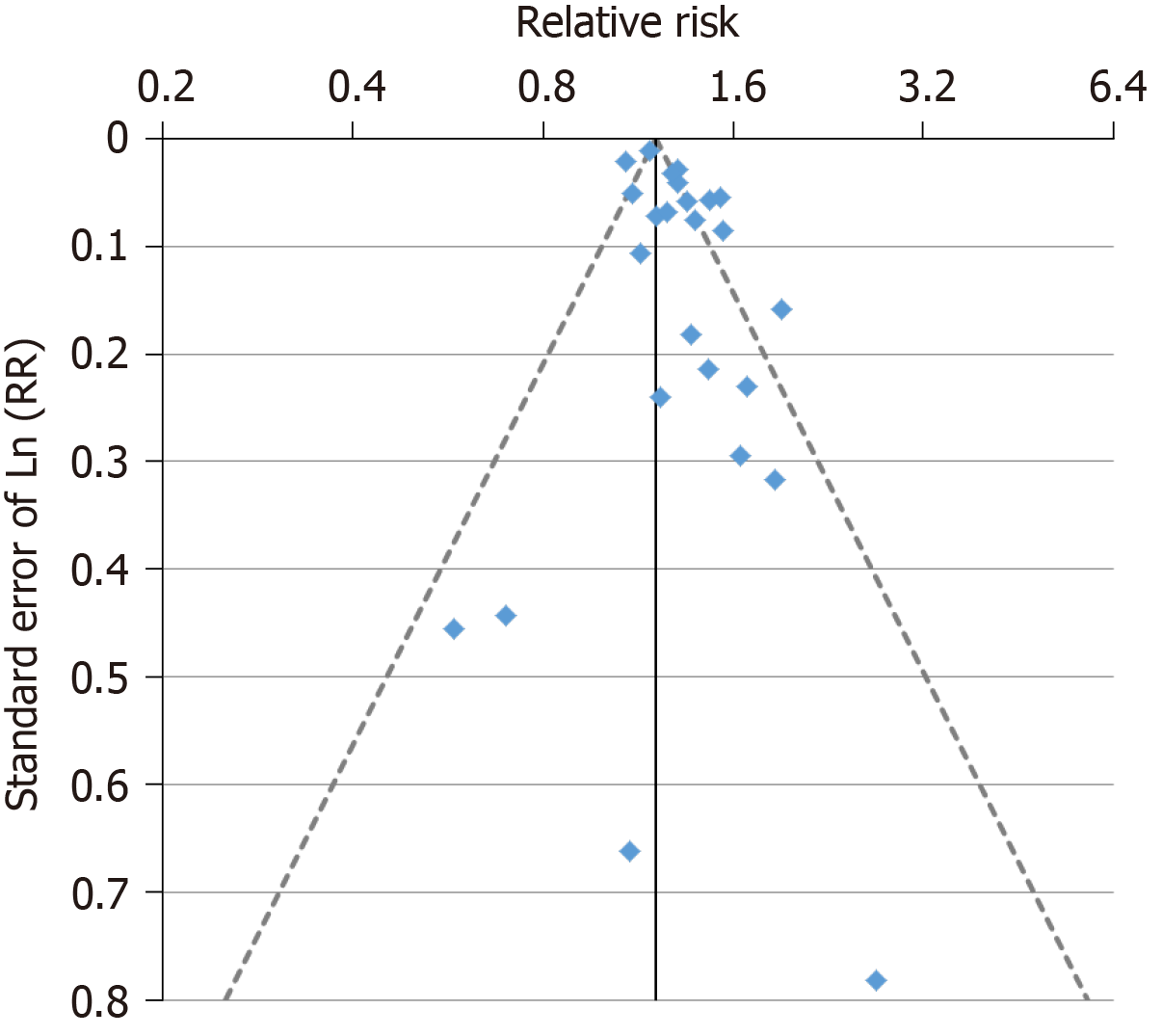Copyright
©The Author(s) 2020.
World J Meta-Anal. Apr 28, 2020; 8(2): 119-152
Published online Apr 28, 2020. doi: 10.13105/wjma.v8.i2.119
Published online Apr 28, 2020. doi: 10.13105/wjma.v8.i2.119
Figure 1 Forest plot for current vs never smoking, results for females.
For each selected relative risk (RR), the figure shows the study ref. (see Table 2) and the RR and 95% confidence interval, both numerically and plotted as a line on a log scale from 0.1 to 10. The RRs are plotted from highest to lowest, with the RR estimate shown in the centre of the line as a square, with area proportional to the weight of the estimate. Lines showing RRs with wide confidence intervals may be truncated, as indicated by an arrow head at the truncated end. Also shown are the overall fixed-effect and random-effects estimates. The vertical line is at RR = 1 with an increased risk indicated by a preponderance of squares to its right. RR: Relative risk; CI: Confidence interval.
Figure 2 Forest plot for current vs never smoking, results for males.
For each selected relative risk (RR) the figure shows the study ref. (see Table 2) and the RR and 95% confidence interval, both numerically and plotted as a line on a log scale from 0.1 to 10. The RRs are plotted from highest to lowest, with the RR estimate shown in the centre of the line as a square, with area proportional to the weight of the estimate. Lines showing RRs with wide confidence intervals may be truncated, as indicated by an arrow head at the truncated end. Also shown are the overall fixed-effect and random-effects estimates. The vertical line is at RR = 1 with an increased risk indicated by a preponderance of squares to its right. RR: Relative risk; CI: Confidence interval.
Figure 3 Forest plot for current vs never smoking, results for sexes combined.
For each selected relative risk (RR), the figure shows the study ref. (see Table 2) and the RR and 95% confidence interval, both numerically and plotted as a line on a log scale from 0.1 to 10. The RRs are plotted from highest to lowest, with the RR estimate shown in the centre of the line as a square, with area proportional to the weight of the estimate. Lines showing RRs with wide confidence intervals may be truncated, this being indicated by an arrow head at the truncated end. Also shown are the overall fixed-effect and random-effects estimates. The vertical line is at RR = 1 with an increased risk indicated by a preponderance of squares to its right. RR: Relative risk; CI: Confidence interval.
Figure 4 Funnel plot for current vs never smoking, results for females.
Each of the selected relative risks (RRs) is shown as a diamond, plotted against its value on the x-axis (on a log scale) and the standard error of loge RR on the y-axis. The vertical line indicates the overall fixed-effect estimate, while the diagonals indicate where 95% of the values should lie, given the standard error of loge RR. Evidence of publication bias is indicated by a tendency for the smaller (high standard error) studies to show larger treatment effects. RR: Relative risk.
Figure 5 Funnel plot for current vs never smoking, results for males.
Each of the selected relative risks (RRs) is shown as a diamond, plotted against its value on the x-axis (on a log scale) and the standard error of loge RR on the y-axis. The vertical line indicates the overall fixed-effect estimate, while the diagonals indicate where 95% of the values should lie, given the standard error of loge RR. Evidence of publication bias is indicated by a tendency for the smaller (high standard error) studies to show larger treatment effects. RR: Relative risk.
Figure 6 Funnel plot for current vs never smoking, results for sexes combined.
Each of the selected relative risks (RRs) is shown as a diamond, plotted against its value on the x-axis (on a log scale) and the standard error of loge RR on the y-axis. The vertical line indicates the overall fixed-effect estimate, while the diagonals indicate where 95% of the values should lie, given the standard error of loge RR. Evidence of publication bias is indicated by a tendency for the smaller (high standard error) studies to show larger treatment effects. RR: Relative risk.
- Citation: Lee PN, Coombs KJ. Systematic review with meta-analysis of the epidemiological evidence relating smoking to type 2 diabetes. World J Meta-Anal 2020; 8(2): 119-152
- URL: https://www.wjgnet.com/2308-3840/full/v8/i2/119.htm
- DOI: https://dx.doi.org/10.13105/wjma.v8.i2.119














